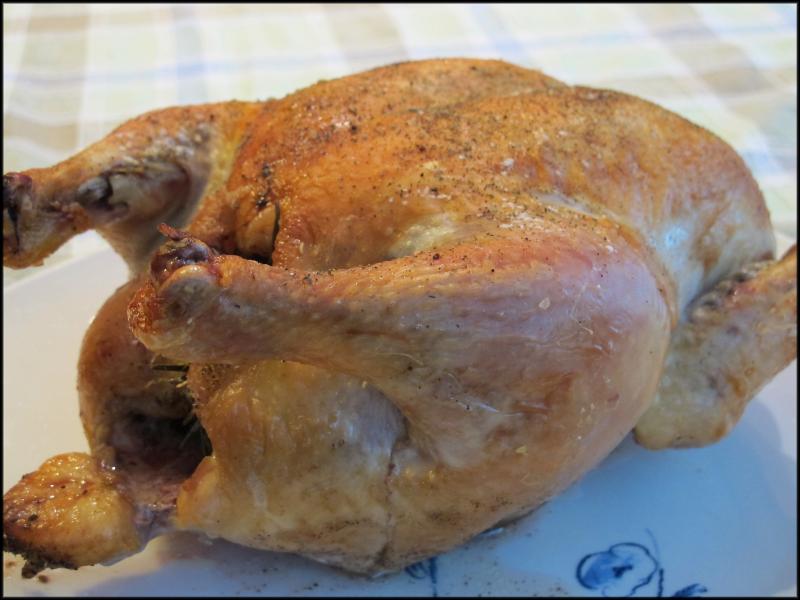Share:
Make dishes that go the distance
April 17, 2020
In light of the current shopping situation, each time we’ve planned a menu, our strategy has been to make enough to have leftovers for a second (or third) meal. One of the easiest ways to do this is with a large item of protein, whether a whole chicken, generous cut of beef or lamb, big slab of tofu, extra-long rack of ribs or a large filet of fish.
The beef or lamb can be roasted for an elegant dinner, with leftovers ground up for shepherd’s pie, especially if you double your batch of mashed potatoes. After grilling the tofu for one stir-fry, you can toss the rest into hot and sour soup. The uneaten sections of ribs can be stripped of their meat to make a pulled pork main course or sandwich. Your leftover fish becomes the heart of a steaming pot of chowder.
For me, the most versatile item to use for planning leftovers is a whole chicken. Since there are only two of us in the house (not counting the cats who steal scraps) we can turn one chicken into at least three meals. Although chicken is a familiar sight on today’s menus, this is a relatively recent development. According to Smithsonian Magazine, chickens were originally raised in Asia for cockfighting almost 10,000 years ago.
More recent reports of archeological research at the ancient Israeli city of Maresha revealed thousands of chicken bones with butchering marks dating from the period between 400 and 200 BC. Chicken didn’t appear on European tables until well over 100 years later. And, early in this country’s history, chickens were primarily raised for their egg production, only becoming dinner when they were too old for laying.
If you’re a student of Delaware history, the emergence of the extensive broiler hen industry can be traced back to Cecile Steele’s 1923 order of 50 baby chicks to replace the ones lost from her laying flock. Instead, she received 500 chicks, which she raised until they were about two and a half pounds, and then sold them to the restaurant trade at a generous profit.
Of course, you can purchase a chicken already cooked, usually sold in the supermarket as “rotisserie” chicken. These whole birds are coated with seasonings (and lots of salt), threaded on a spit, then cooked under the heat as the spit turns. You can make something just as delicious (or, in my book, even better) in your own oven.
The key to a moist interior and crisp exterior is to get the bird thoroughly dry before cooking. If there is any moisture left on the outside of the chicken, when you place it in the oven, the liquid will evaporate and produce steam. You’ll need to completely remove all traces of moisture with paper towels before placing aromatics in the cavity.
Once you’ve enjoyed the elegant bird, carved tableside and perhaps served with stuffing and green bean almandine, prepare the leftovers for their future. I usually strip the carcass of all the meat, reserving chunks of breast meat for chicken salad and the rest as a topping for tomorrow’s grain bowl main course, layered with quinoa and sliced veggies.
After the carcass is bare, make stock. Break the carcass into smaller sections of bones and place them in a large pot with onion, celery, carrots and other vegetable scraps you have on hand. Add enough water to cover, and simmer for at least two hours. Strain out the solids and transfer the liquid into a covered container; keep it in the refrigerator until ready to use. With just one bird, you can enjoy several meals.
Roast Chicken
1 whole chicken
salt & pepper
2 lemon quarters
2 sprigs thyme
2 halved garlic cloves
Preheat oven to 450 F. Place a v-shaped rack in a large roasting pan; set aside. Remove the giblets and any excess stringy materials from the inside of the bird. Using paper towels, thoroughly dry the outside of the skin to remove all moisture. Place in the rack and stuff the cavity with lemon, thyme and garlic. Tuck the wings under the chicken by pulling them backward and nestling them beneath the breast. Close the opening by trussing the legs with kitchen twine. Make sure the chicken has reached room temperature before roasting. Place the pan in the oven and reduce temperature to 350 F. Cook until internal temperature reaches 165 F, about 20 minutes per pound. Remove pan from oven and allow chicken to rest at least 15 minutes before carving.
Chicken Quinoa Grain Bowl
1 1/4 C quinoa
2 C water
2 C shredded cooked chicken
1 C sliced cucumber
1 C grape tomatoes, halved
1/2 C pitted Kalamata olives
1/2 C thinly sliced red onion
3 oz feta cheese
1 T olive oil
juice of 1 lemon
1 peeled garlic clove
1 t oregano
1/2 t marjoram
salt & pepper, to taste
1 oz crumbled feta
Combine the quinoa and water in a saucepan. Bring to a boil, then cover and reduce heat to low. Cook until water is absorbed, about 15 minutes. Fluff with a fork and place in large serving bowl. Top the quinoa with chicken, cucumber, tomato, olive and onion, arranged in sections. In a blender or food processor, puree the feta, olive oil, lemon juice, garlic, oregano and marjoram. Season to taste with salt and pepper. Drizzle dressing over the bowl and sprinkle with crumbled feta. Yield: 4 servings.





















































